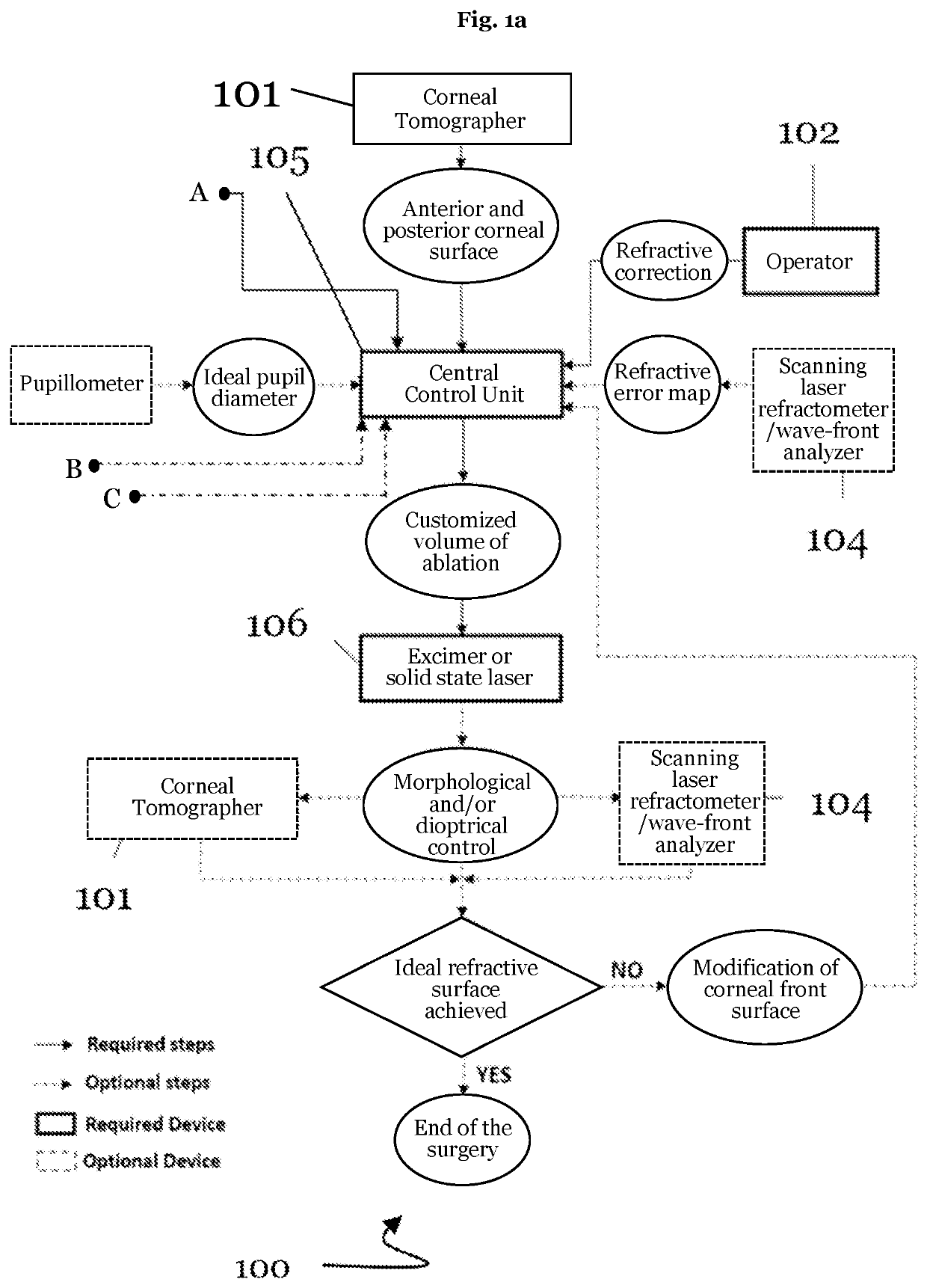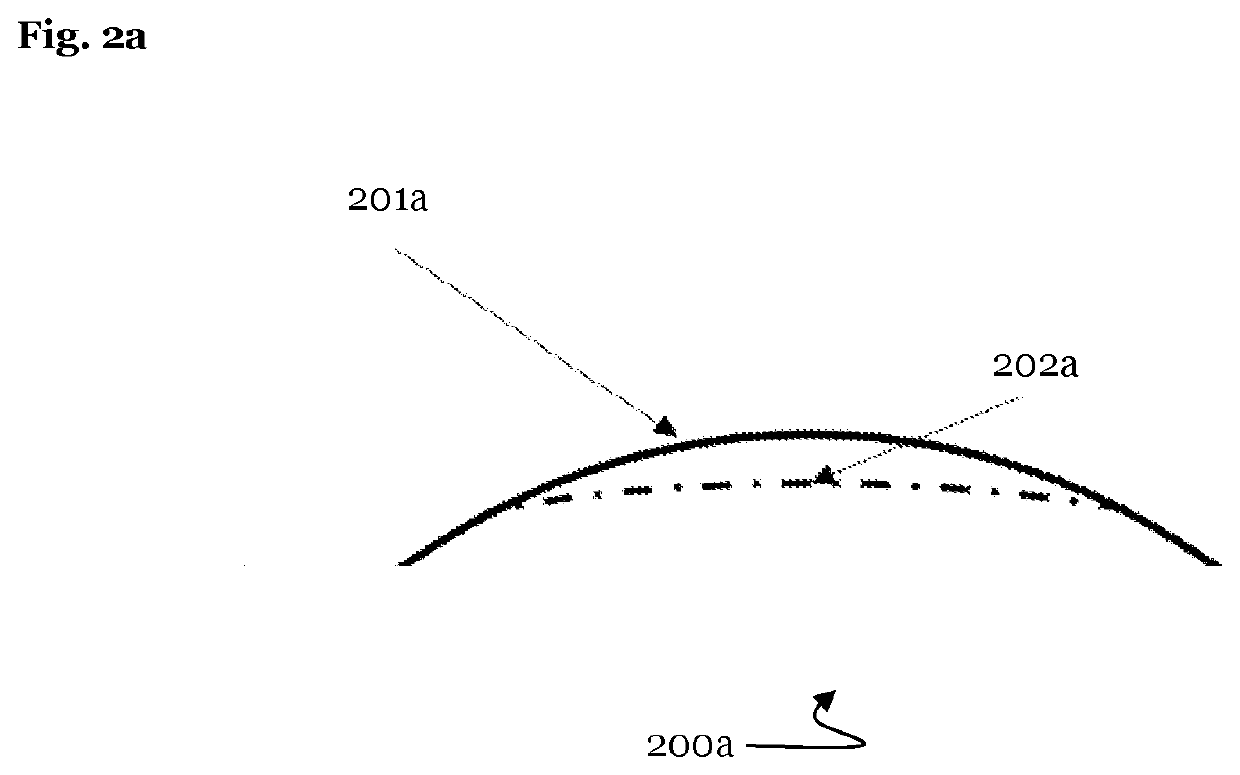Customized ablation to correct visual ametropia
a technology of visual ametropia and ablation, which is applied in the field of customized ablation to correct visual ametropia, can solve the problems of insufficient improvement of vision quality, inability to accurately determine the target profile of the eye, and inability to achieve optimal eye health, so as to improve the vision of the individual patient, improve the effect of vision correction, and improve the determination of correction information
- Summary
- Abstract
- Description
- Claims
- Application Information
AI Technical Summary
Benefits of technology
Problems solved by technology
Method used
Image
Examples
Embodiment Construction
[0078]Possible embodiments of the present invention will be described in the following. For brevity, only a few embodiments can be described. The skilled person will recognize that the specific features described with reference to these embodiments may be modified and combined differently and that individual features may also be omitted if they are not essential. The general explanations in the sections above will also be valid for the following more detailed explanations.
[0079]FIG. 1a / b shows an example flow chart 100 for customized corneal ablation by means of an apparatus according to the present invention.
[0080]In this example, an apparatus comprises a corneal tomographer 101, a control unit 105 (e.g., a computer, e.g. a central control unit), a biometer 108, and an excimer or solid state laser 106. Reference numeral 102 indicates an operator, e.g., a treating doctor. In this example, the apparatus may optionally comprise a pupillometer 103, and / or a scanning laser refractometer...
PUM
 Login to view more
Login to view more Abstract
Description
Claims
Application Information
 Login to view more
Login to view more - R&D Engineer
- R&D Manager
- IP Professional
- Industry Leading Data Capabilities
- Powerful AI technology
- Patent DNA Extraction
Browse by: Latest US Patents, China's latest patents, Technical Efficacy Thesaurus, Application Domain, Technology Topic.
© 2024 PatSnap. All rights reserved.Legal|Privacy policy|Modern Slavery Act Transparency Statement|Sitemap



